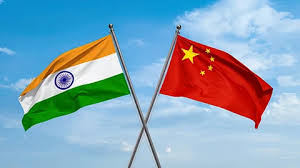India resumes tourist visas for Chinese nationals after five years hiatus

In a significant diplomatic development, India has announced the resumption of tourist visa services for Chinese citizens starting July 24, 2025. This marks the end of a five-year suspension that began in the aftermath of the Galwan Valley clash and the COVID-19 pandemic. The move is widely seen as a calculated step toward mending strained bilateral ties and reviving people-to-people engagement between Asia’s two most populous nations.
A Long Hiatus Comes to an End
India halted the issuance of tourist visas to Chinese nationals in 2020, following deadly border skirmishes in Eastern Ladakh that left at least 20 Indian soldiers dead. The incident significantly impacted diplomatic and cultural exchanges, with tourism, trade, and academic collaborations bearing the brunt. While other visa categories such as business, employment, and student visas resumed gradually over time, tourist visas remained frozen — until now.
The Ministry of External Affairs confirmed the restart of tourist visa processing at Indian Visa Application Centres (IVACs) located in Beijing, Shanghai, and Guangzhou. Interested applicants must submit physical applications along with the required documents and attend a scheduled appointment. Notably, the e-Visa facility for Chinese nationals remains suspended, indicating a cautious approach despite the thaw.
Signals of a Diplomatic Reset
This decision does not exist in a vacuum. In recent months, there have been visible efforts from both New Delhi and Beijing to stabilize relations. Prime Minister Narendra Modi and Chinese President Xi Jinping held brief but symbolic conversations on the sidelines of the Shanghai Cooperation Organisation (SCO) Summit in Russia earlier this year. While no formal meeting took place, the interaction set the tone for backchannel diplomacy.
Both countries also agreed in early 2025 to resume direct flight services that had been suspended since the outbreak of the pandemic. These confidence-building measures suggest a mutual recognition that prolonged hostilities serve neither side’s long-term interests — particularly at a time when global geopolitics is undergoing rapid realignment.
China responded positively to India’s latest announcement. In a statement released by the Chinese Embassy in New Delhi, officials said they “welcome the decision” and hope it leads to “increased exchanges and better mutual understanding.” The response is being interpreted by analysts as a sign that Beijing is also keen to recalibrate its relationship with New Delhi, especially in the wake of growing global economic uncertainty.
Tourism as a Soft Power Tool
Tourism has long served as a bridge between cultures, offering a channel for informal diplomacy and public engagement. Before the 2020 freeze, Chinese tourists formed one of the fastest-growing segments of foreign arrivals in India. From exploring Buddhist heritage sites like Bodh Gaya and Sarnath to indulging in Ayurvedic retreats and visiting iconic monuments such as the Taj Mahal, India held strong appeal for Chinese travelers seeking historical and spiritual experiences.
Conversely, many Indian tour operators have expressed optimism about the potential resurgence of Chinese arrivals. “The revival of the Chinese market is a welcome boost, especially after the economic blows our sector took during COVID-19,” said Arun Chopra, director of a Delhi-based travel agency. “While it might take time to return to pre-2020 levels, this is a strong beginning.”
Challenges Still Loom
Despite these positive developments, several roadblocks remain. The key among them is the unresolved border dispute in Ladakh, where both nations continue to maintain a heavy military presence. The 2020 clashes, though now years behind, left a lingering mistrust that has slowed progress in trade, cultural exchange, and regional cooperation.
Furthermore, India’s decision not to reinstate e-Visa services for Chinese citizens — even while offering them to dozens of other nationalities — indicates a measured stance. It reflects New Delhi’s balancing act: pushing for normalization while retaining leverage on issues of strategic concern.
Some security analysts caution against reading too much into the visa resumption. “This move is symbolic and limited in scope. It’s more of a gesture than a reset,” says Dr. Meena Kulkarni, a geopolitical analyst at Jawaharlal Nehru University. “The real test will be whether border talks make substantial progress and whether there is reciprocity in other domains like trade regulations and investment policy.”
Looking Ahead
The reopening of tourist visas for Chinese nationals is a small yet meaningful gesture that could mark the beginning of a more pragmatic phase in India–China relations. It comes at a time when both countries face internal economic challenges and global uncertainties, including disrupted supply chains, climate change, and growing U.S.-China strategic competition.
India, which has emerged as a hub for global investment and manufacturing post-pandemic, cannot afford prolonged isolation from its powerful neighbor. Likewise, China — facing a slowdown in its own economy — stands to benefit from normalized ties with the world’s fifth-largest economy.
For now, the focus remains on rebuilding trust, encouraging people-to-people connections, and maintaining open channels of communication. As flights resume and embassies gear up for increased activity, the hope is that renewed tourism could pave the way for broader cooperation in the years to come.






